Manitou Springs, Colorado
How a stranger in her 60s with a face tattoo reaffirmed my belief in the importance of eating breakfast
By the time I’d driven my van across South Dakota, down a sliver of Wyoming, and into Colorado, I was dying to see the mountains. In addition to visiting the four National Parks scattered throughout the state, there was a part of me that saw myself in Colorado sometime in the future when I was ready to park the van in front of a house more consistently one day. I’d just celebrated my first vanniversary in the Badlands and was beginning to wonder how many more cross-prairie road trips I had left in me. But, I’d reached the light at the end of the prairie: the Rocky Mountains, and I was ready for some altitude and looser drug laws.
With only a month to explore the whole state, I had to be strategic about where to visit. I decided to keep driving south, tempting as it would have been to cut west and head straight to the mountains. Colorado's largest cities are conveniently located along I-25, from Fort Collins to Colorado Springs, which was my destination. These cities are situated at the base of the Front Range foothills where the prairie comes to an abrupt halt.
Manitou Springs is a small town nestled in the foothills of Pike's Peak, one of the many 14ers in the region. I parked on a quiet, residential street that was too steep for anyone to suspect someone would be sleeping in their vehicle and took a walk around.
Manitou Springs has been attracting tourists since the 1870s to experience the healing waters of its hot springs. The water was marketed as a cure for tuberculosis — so long as you came to stay in a spa for treatment. To accommodate these visitors, the town developed around these turn-of-the-century health spas, constructing beautiful Victorian mansions on the rocky hillsides. Today’s tourists feel a connection to those original visitors seeking a mind-body-spirit experience — myself included.
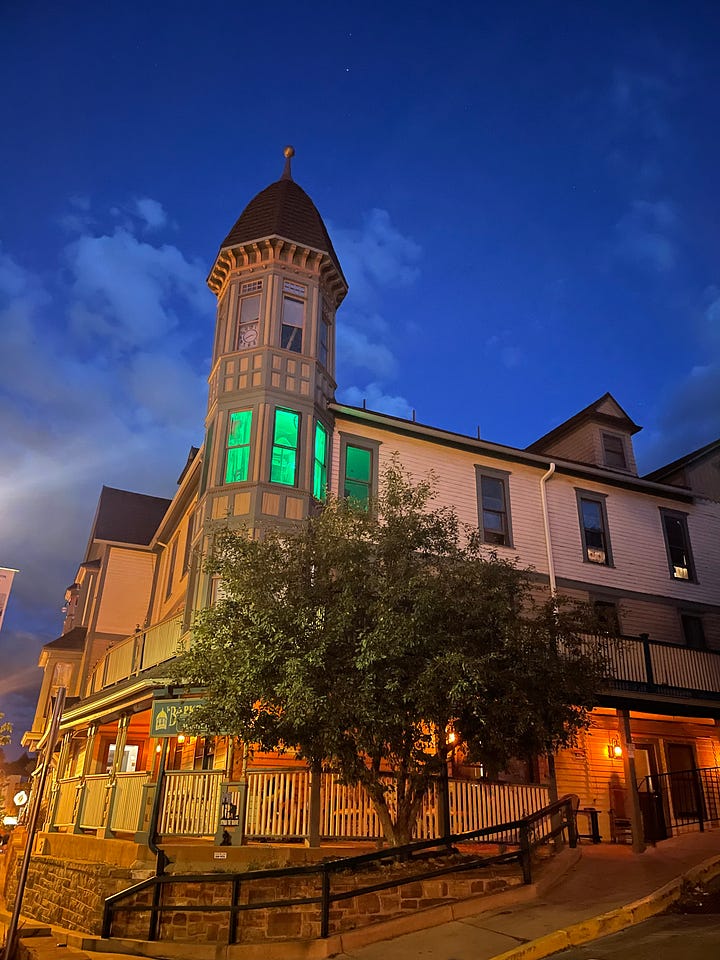
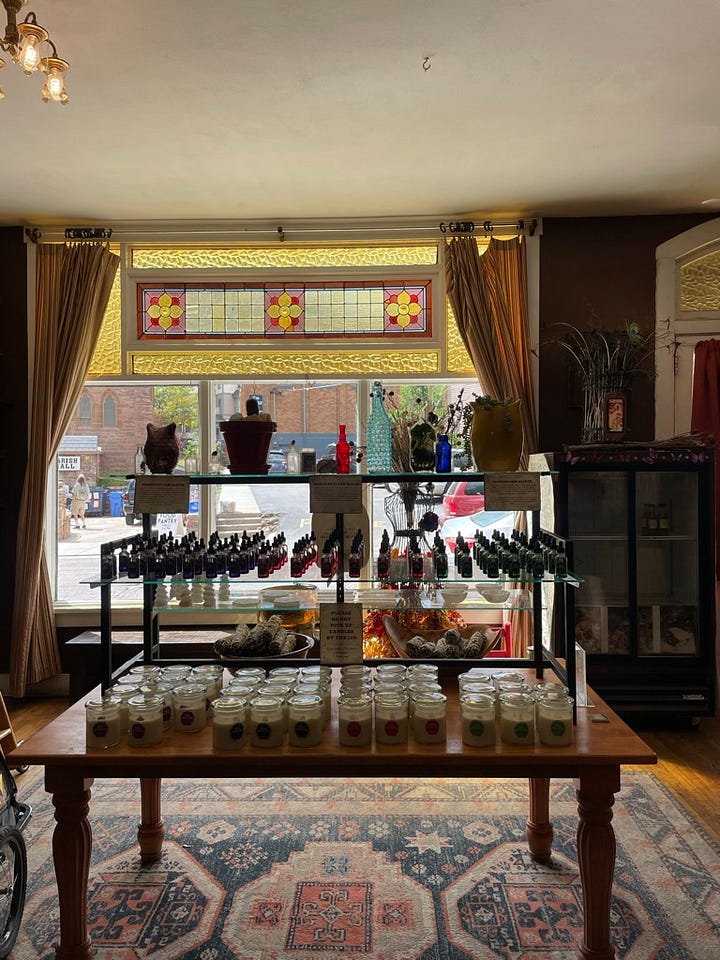
Between the 19th-century architecture and the crystal shops every few blocks, it made sense that this place would attract the vinn diagram of people who share both a love of holistic Eastern medicine and a staunch notion that Covid was a Chinese conspiracy. Hippies with AR’s, so to speak.
Early the next morning, I walked over to a coffee shop called Good Karma to get some work done. The owner - a chatty, charismatic man from Brazil - welcomed me to both the shop and the town and we chatted about what to do in the area.
“Well really, I came to hike Pike’s Peak,” I told him.
He gave me a look of confusion. “You said you just got here? And you want to hike a 14er alone? No no no, that won’t do. You need to go with someone.”
I wanted to be annoyed that a man was suggesting I couldn’t do a hike alone, but the truth is that he was right. I was less than a week into altitude and a 14er isn’t something most people can just wing.
“You’d be better off doing a hike right here in town to get acclimated first.” The owner gave me a map of the hiking trails right in town, including the infamous Incline. “But it’s still not that easy, you see. I would feel better if you went with someone.”
Just before he had a chance to conveniently offer himself, a woman sitting a few seats down from me chimed in: “I’d go with you.”
I looked over at the woman in her early 60s with a blue star tattoo on her upper cheek, sitting with a sketchbook. I was instantly fascinated by her - her art, her witchy black wardrobe, and her boldness - and agreed on the spot to meet her the next morning. She introduced herself as Cheryl.
I found Cheryl in the parking lot of The Incline around 6 am smoking a cigarette and stretching her legs. The lot was almost full already but Cheryl saved me a spot next to her car by ominously standing in it, smoking, and glaring at people who slowed to consider parking. I offered to make her some coffee in the van and we got moving soon after.
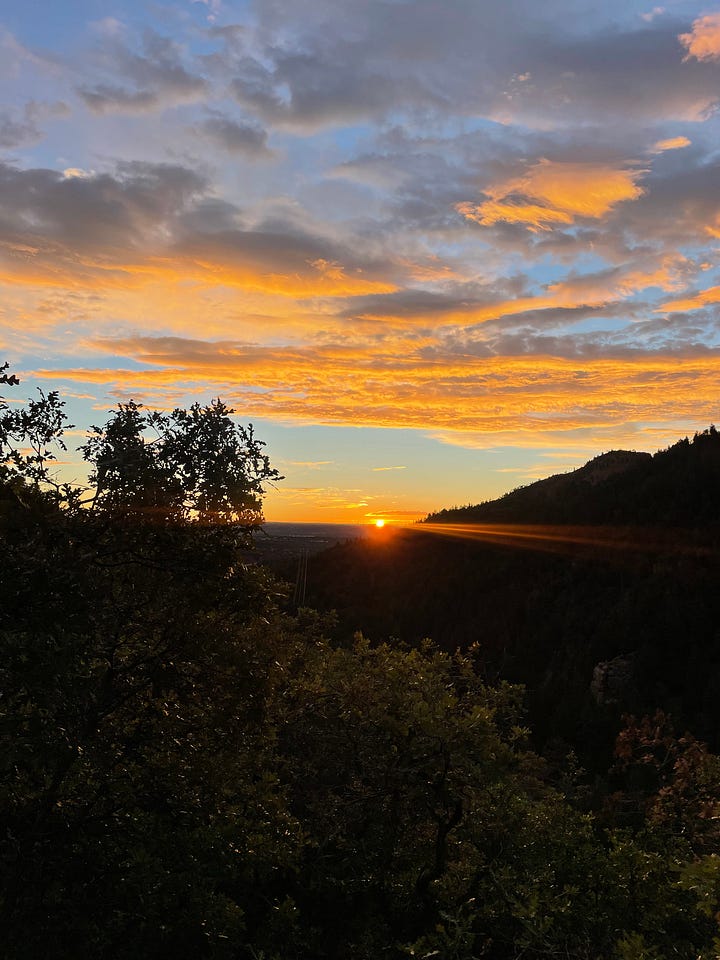
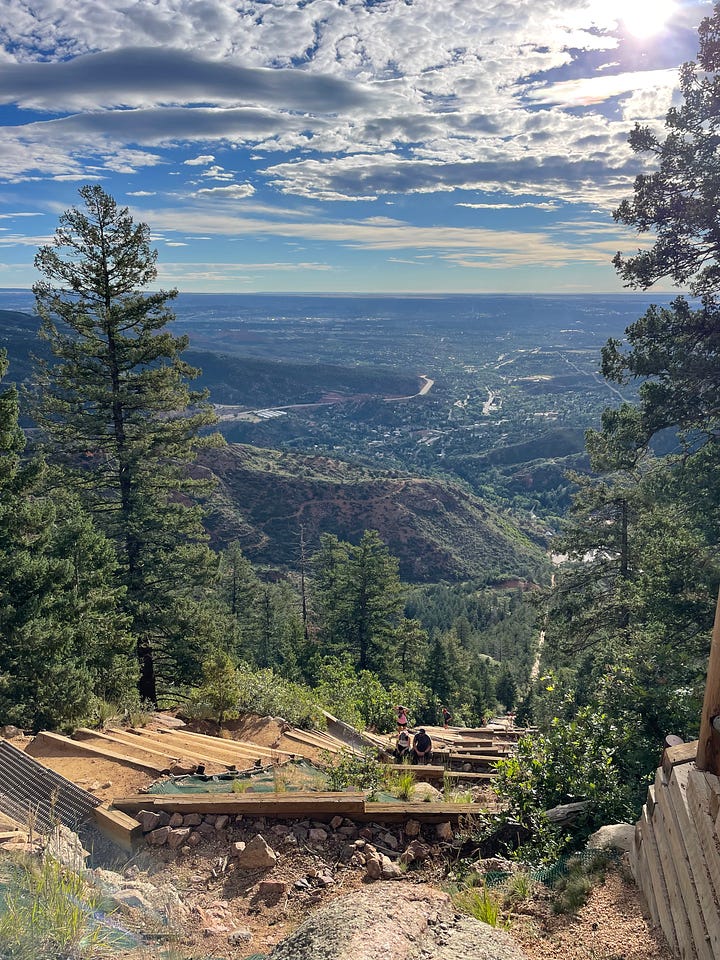
The Incline is an infamous hiking “trail” that spans just only 0.88 miles – directly vertical. Gaining 2,000 feet of elevation in that short of a distance means you’re essentially walking up a flight of stairs at 45 degrees, sometimes as steep as 68 degrees, at an already high altitude. The hike is used by locals and tourists alike as more of a “fitness challenge” than a scenic enjoyment, though I can’t say I wasn’t tempted by sheer competitiveness alone. Many of the hikers will ascend the Incline and descend on an alternate zig-zagged path just off the side of the steep stairway to save their knees. Cheryl and I decided early to only stick to the scenic and less insane zig-zagged trail both ways.
Cheryl flicked her dead cigarette into a trashcan in the parking lot and gave me a nod. “Let’s get moving then,” she said as we scuffled along the dusty, red rock trail.
We moved slowly enough to enjoy our travel mug coffees and chat at a comfortable level, stopping to take pictures of the sunrise and each other. “So,” I asked, “what brought you here, specifically?”
“Well, I was ready to get away. Get outside. Work on my art. Be connected with nature and find myself. I was in Florida for a long time with my ex-husband and when he died, finally, I was ready for a new life.”
I didn’t bother to ask if that was a happy “finally” or a sad “finally.” From the rest of the conversation, I started to gather that it was more of the former.
Every twenty minutes or so, we would be passed by a group of men running down the opposite direction, likely coming from hiking up the Incline. More often than not, they were shirtless and expressionless, making no attempt to say good morning and acknowledge us as they sprinted past.
“Those boys better watch out,” she scoffed, “or they’re gonna eat ass on this trail. It’s way too slick to be running.”
While it was a relief to not be leered at or made uncomfortable by groups of men, it was odd to not even get a “hello, good morning” from any of them. It’s common trail etiquette to at least give a small wave to the other person, to acknowledge their existence. No one had so far.
“What’s their deal? Why are there so many dudes?”
“Military,” she answered minimally. “These boys are literally everywhere.”
Between the Army base at Fort Carson and the Air Force Academy, the area was crawling with shaved heads and bad tattoos. The lack of decorum towards us made it even odder, considering the old-fashioned norms of “traditional men” like saying good morning or even a respectful nod towards a woman should be more obvious coming from military personnel. It’s the same type of traditional man who might turn to the internet later in the day and complain that “women don’t want real men anymore,” when in reality, we would probably appreciate a normal “good morning” from a nice stranger.
As we continued to pass descenders and work our way up the mountain, we swapped stories of love and loss and travel and fulfillment. Our 30-year-old age gap didn’t prevent us from bonding over shared dating experiences, notably the type of men we’d been drawn to in the past. And what we were both doing to avoid those men again.
About halfway up the mountain, a few yards ahead of us, a woman in front of us slipped on the gravelly path and fell on her wrist. We hurried over to her and she attempted to stand up and continue.
“Hey, are you okay?” Cheryl asked as the woman sat up stunned, disoriented and confused. She tried to stand up and continue like nothing was wrong, but the expression on her face did not match the actions she was attempting. “Can you hear me? Can you sit back down?”
We held her sides and slowly lowered her back down to the ground. She was crying in that way children weep when they hurt themselves abruptly but can’t immediately register what just happened.
“Can you tell me your name?” Cheryl asked.
The woman held her wrist close to her chest. “My husband is going to be so upset.”
Cheryl looked at me to give me a look that was already met by the one on my face. “How are you feeling? Can you wiggle your fingers?”
In a daze, she moved her hand slowly and winced lightly in pain. “I think it’s fine, it’s just a sprain.” After taking a few deep breaths, she laughed awkwardly and apologized to us for stopping our hike.
Another group of men ran by without acknowledgment. A woman in her 50s was on the ground, grasping her wrist, and not a single man stopped to see if we need anything. A couple - a man and a woman - stopped as they approached us, but continued when they saw there was nothing to be done. I wondered if the man would’ve stopped if his wife weren’t there.
Cheryl continued to take care of her by asking questions. “How does your head feel? Do you have plenty of water?” The woman answered in short responses, though her body was clearly answering for her that she was not okay. She seemed to come in and out of focus, possibly from hitting her head.
“I’m fine, really. My husband will be down any minute now – he climbed up the Incline and will run down this side. We were supposed to meet in the middle, but I’m going a little slow.”
I laughed, “yeah? Well, being slow on this trail is still a hell of an accomplishment. The altitude alone is killing me.”
She lightened up. “My husband and I just got here yesterday. Maybe I didn’t have time to adjust to the air. I just didn’t want to go up the Incline so I compromised with him and took this trail instead. He’s going to be so annoyed if I have to get this checked out while we just started our vacation!”
I think she was attempting to make a joke about how inconvenienced her husband would feel about her injury. I did not find the joke funny, and neither did Cheryl.
After sitting with her for a few minutes, waiting for her husband to gallop in on a white horse or whatever she was expecting, we started to worry that her wrist really did look broken, and she really did seem out of it. “Okay, I’m going to call an EMT,” Cheryl asserted.
“No!” the woman snapped. “Look, I’m fine! When my husband comes, we’ll walk down together.”
“Okay, but at least let us call to have them wait for you when you get to the parking lot. This isn’t something you should wait on, especially if you do have a head injury.”
The woman reluctantly agreed, though I don’t think her consent was necessary for Cheryl – she was already on the phone getting instructions from the local EMT about what to do.
Another group of men ran by, and one asked - while running - “everything good?”
Cheryl, on the phone with an EMT, arguing with the woman to let us help, snapped back, “yes, fine, we’re fine.” It didn’t matter either way as he continued running in lock-step with the rest of the unit.
The EMT on speakerphone said clearly: “do not attempt to move. The EMT does rescue trips like this up the Incline all of the time, they will be there shortly.”
“Rescue attempt?” the woman asked, growing concerned. “My husband is going to be so upset that we have to go to the emergency room on vacation.” She tried to stand again and walk away from us but didn’t make it far before she wobbled and almost fell back down.
Cheryl finally snapped. “Well, if he were here with you, we wouldn’t have to worry about that, now would we? If you got hurt, you got hurt: you’re going to urgent care at the very least.”
She seemed defeated, finally, and we continued to wait for the EMT. While waiting, my morning coffee kicked in and I excused myself to take care of nature in nature.
When I returned to the trail, I saw Cheryl standing alone, and a man a few yards down the trail, escorting his wife, holding her arm. “What happened?” I asked.
Cheryl turned around to me and shook her head. “He finally got down here and started fussing at me. Me! He was mad that I called an EMT. I said I don’t care, she was told very directly to not move. I told him those were the instructions from the professionals, but he didn’t care. He just wanted to get down the mountain.”
“So… what? They’re just going to hobble and hope for the best? We literally just saw her fall again.”
Though Cheryl and I had similar histories with men, hers were advanced in both experience and intensity. “We can’t help her,” she said coldly. We gathered our things to continue our hike.
I didn’t know who to be more upset with: the wife, for listening to her husband over an actual healthcare professional; Cheryl, for giving up so easily; or myself, for walking away to take a poop at the wrong time. Ultimately, there was no point in being mad at the wife because I knew exactly the type of man her husband was simply by hearing the way his wife “joked” about being taken to the hospital as an inconvenience to him. I’d been there. So had Cheryl.
We continued hiking and I changed the subject. “What’s up with the blue star?” I asked bluntly.
Cheryl smiled. “I’d always wanted it done. A friend of mine out here did it a few years ago.”
“You got a face tattoo in your 60s?”
“Of course. When else would I get it?”
She got me there. I never got a full story on how she ended up in Manitou Springs, or why this time in her life was so freeing, but I’d gathered enough context at this point to understand why this freedom was so important to her.
“I’m seeing this new guy now,” she told me, “and it’s going pretty well. Very well, even.”
“What do you like most about him?” I asked
She smiled and said, “he helps me eat.”
Through decades of dieting, body dysmorphia, restriction, and perfectionism, many women simply forget to eat. It’s a habit that hangs around long after you’ve given up the diet: that feeling that hits around 2 pm, possibly later, when you realize you haven’t eaten a real meal all day. It doesn’t have to be from someone specifically calling you fat or denying you the ability to eat, but rather the de-prioritization of our bodily health in exchange for not inconveniencing anyone else and retaining our shapes.
He helps me eat meant he cared about her nourishing her body regardless of weight fluctuations.
He helps me eat meant that he paid attention to her and made taking care of her a priority in his own life.
He helps me eat meant he wasn’t so obsessed with his own body image issues and didn’t put his insecurities onto her by calling out when she ate too much or ate the wrong thing.
He helps me eat meant he’d put time aside to cook or prepare food for her, particularly at mundane times when he wouldn’t get “credit” for cooking her dinner.
He helps me eat meant she wasn’t an inconvenience if she fell and needed to be taken to a hospital on vacation.
I’d written in my journal back in June what I’d been looking for in a partner after my last relationship ended. “Cooks me breakfast without me asking” was the second item on the list.
I smiled to myself and told her, “I think I found someone who helps me eat.”
Cheryl smiled back. “That’s beautiful,” she said.
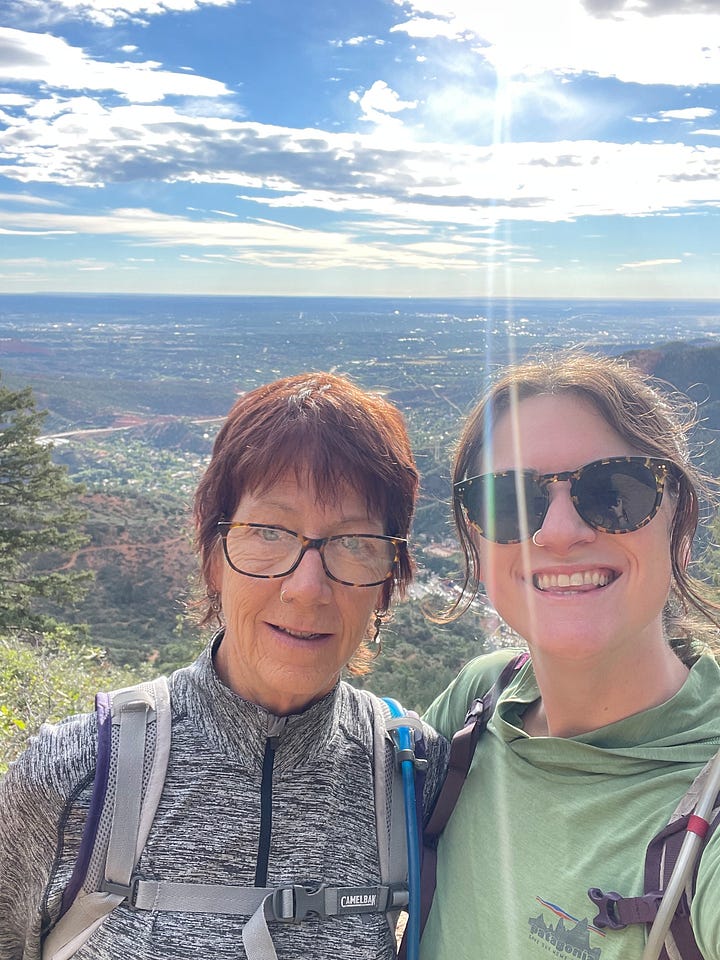
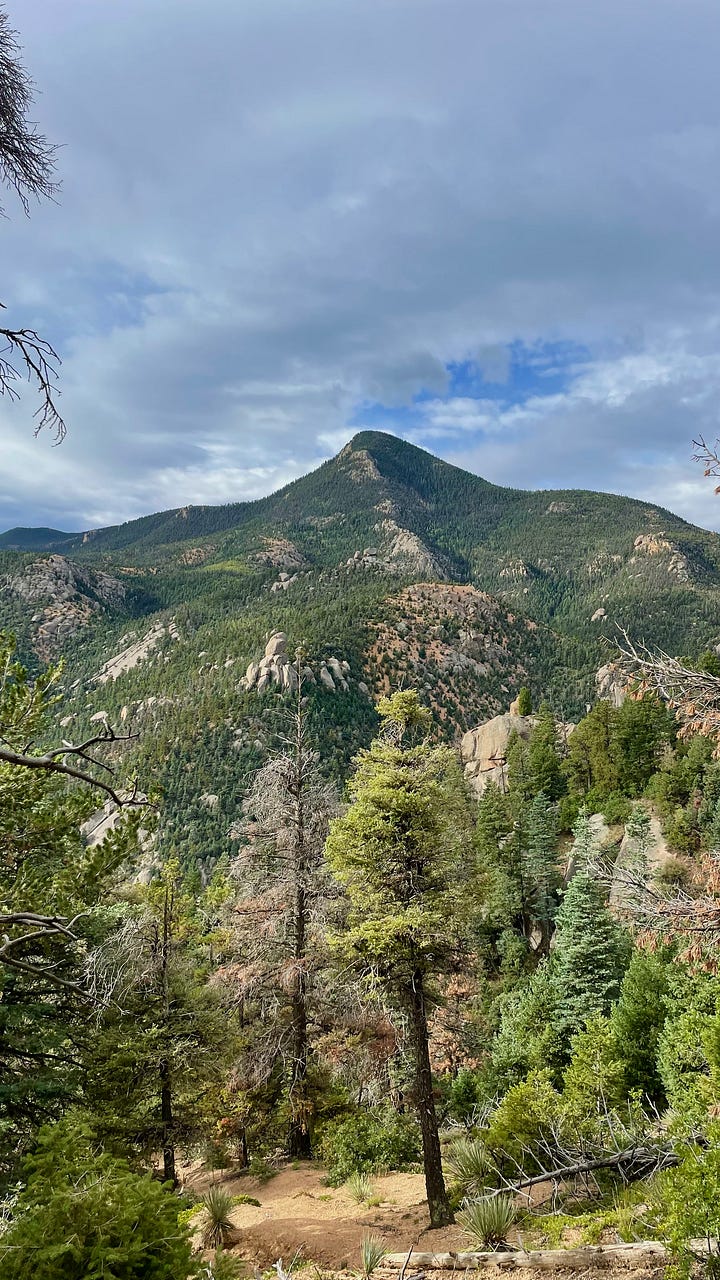
The next morning, I met Cheryl for breakfast at the same spot, but she was running late. When she finally arrived, she dropped her sketchbook and purse and asked immediately, “do you have a light?”
“Why are you so late? I have to hit the road in like an hour!”
She smiled coyly, “I spent the night for the first time. Didn’t have everything I needed with me. Do you have that light?”
When I said no, we decided to take a walk to go look for one. Around the corner, we came across a group of people on a break behind one of Manitou Springs’ Victorian hotels. She bummed a light and we chatted with our new friends about the town.
A husband and wife, wearing different uniforms with the same hotel logo embroidered on the front, told me they had been living in their home just up the road for almost a decade.
“We really wanted to be somewhere our kids could feel safe and free at the same time,” the man answered when I asked what brought them here originally. He had a crystal around his neck and a bracelet of beaded stones around his wrist. “There’s just so much crazy shit going on out there in the world and this town has been a place of healing for a long time.”
The couple and Cheryl discussed their shared feeling that the country had lost its spiritual compass and connection to a greater cause. “We all just need to come together over shared values and live communally. To take care of our own. Not let outsiders and big government tell us how to live.” I let the dog whistle slide. Hippies with AR’s, as it were.
I told them I was heading to another spiritual hub next: Crestone. They gave me a nervous look. “Do you have people out there? People you know?”
“No, I was just gonna drive over there and park for the night somewhere. Like I always do.”
I knew why they were apprehensive. I knew about Crestone and its spiritual pull from a podcast. Early on in the van, I had no idea how to fill my time on those insanely long drives. So I got into true crime podcasts for the first time since Serial. This particular story was about a woman who moved to Crestone to find spiritual enlightenment and went missing after being - as the podcast alleges - drugged and assaulted. Even knowing this, I was pulled to see it for myself as I’d been pulled to visit Cassadaga or Mount Shasta or any of the other spiritual hubs across the country. Much like Cheryl and the couple, I was looking for my own home for spiritual meaning. I just still wasn’t sure where to find it.
“We knew Kristal,” the wife added quietly. “Sweet girl. I don’t know what happened. Just keep an eye out and don’t spend much time with men hanging around town, yeah?”
She didn’t need to warn me about that, but I thanked her anyway.
With the cautious well-wishes, a stranger’s lighter, and some art from Cheryl, I was off to Crestone.

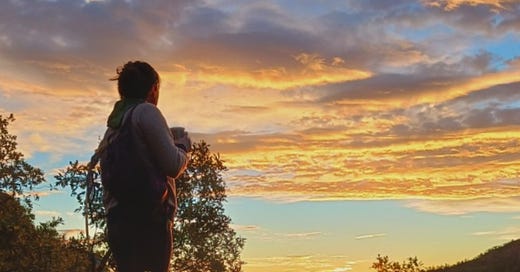


We only spent a few hours in Manitou Springs too— just long enough to do the climb and run down 😂 it’s truly such a smooth fun jaunt down!